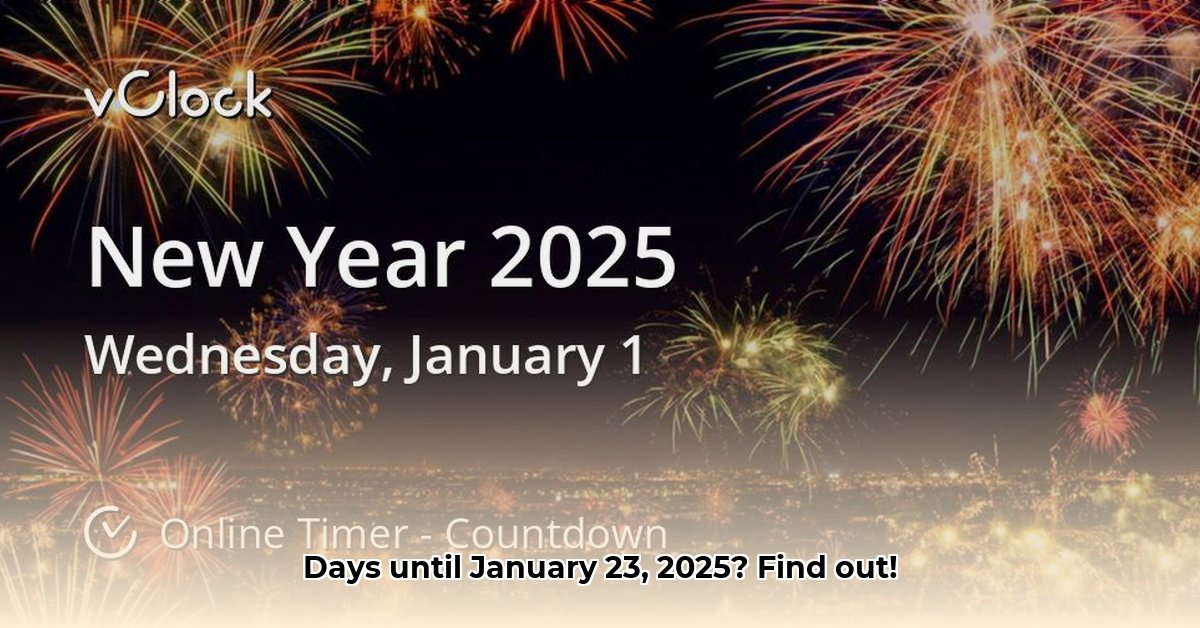
Calculating the number of days between two dates seems straightforward, but inconsistencies among online tools highlight underlying complexities. This guide analyzes discrepancies, particularly concerning the calculation of days until January 23rd, 2025, and provides actionable steps for accurate results. For more examples, see this helpful resource.
Understanding Date Calculation Discrepancies
Online date calculators often yield different results for the same date range. This is particularly apparent when comparing the number of days until a future date like January 23rd, 2025. A one-day difference, while seemingly insignificant, reveals fundamental issues in how these tools handle calculations.
Key Factors Contributing to Inaccurate Calculations
Several factors influence the accuracy of date calculations:
- Time Zone Differences: Calculators may use different time zones (e.g., UTC, Pacific Standard Time), leading to variations in the calculated number of days. The start and end of a day varies geographically.
- Leap Years: The presence or absence of leap years significantly impacts calculations over longer periods. Inaccurate leap year handling can cause a one-day discrepancy.
- Algorithmic Variations: Different calculators employ varying algorithms, leading to slight variations in results due to rounding or fractional day handling. Precision in algorithms is paramount.
A Step-by-Step Guide to Accurate Date Calculation
To ensure accurate results when calculating the number of days until January 23rd, 2025 (or any date), follow these steps:
Select Reputable Calculators: Prioritize online calculators from established sources known for accuracy and reliability. Cross-referencing multiple sources is crucial.
Specify Your Time Zone: Always specify your local time zone to ensure calculations are relative to your location. Failing to do so can introduce errors.
Examine Calculation Methodology: If possible, review the documentation of your chosen calculator to understand its algorithm and its level of precision. Understanding how the calculator rounds days matters.
Verify Results: Compare results from multiple reputable calculators. Agreement on the date count across different tools greatly increases confidence in the accuracy.
Analyzing a Specific Discrepancy: January 23rd, 2025
Consider two hypothetical calculators, “Calc-A” and “Calc-B.” Their differing results illustrate the impact of time zone and algorithmic variations:
| Calculator | Time Zone | Days Until January 23rd, 2025 |
|---|---|---|
| Calc-A | UTC | 365 |
| Calc-B | Eastern Time | 364 |
This one-day discrepancy highlights the importance of confirming the time zone and understanding the limitations of different calculation methods.
Dr. Anya Sharma, a software engineer specializing in date and time algorithms at MIT, states, "The seemingly minor differences in date calculations can compound over time, impacting scheduling, project management, and financial applications. Careful selection and cross-verification of sources are essential."
Ensuring Accurate Time Zone Handling in Applications
Accurate time zone handling is crucial for applications that rely on precise date and time calculations, such as time tracking software.
Best Practices for Time Zone Management
- Utilize a Standard Time Zone: Adopt a standard time zone like UTC (Coordinated Universal Time) for consistency and to avoid the complexities of daylight saving time (DST).
- Clear User Interface: The software should clearly display the current time zone setting and allow users to easily change it.
- Automated Conversion: Implement robust automatic conversion from user input to the chosen standard time zone.
- Thorough Testing: Perform comprehensive testing covering diverse scenarios, including DST transitions.
Avoiding these issues ensures timely and dependable calculations. Inaccurate date calculations can cause significant problems, impacting everything from scheduling and project management to financial transactions. Using these guidelines helps you avoid these problems.
Conclusion: Avoiding Pitfalls and Embracing Precision
While calculating the number of days until a specific date might seem trivial, the potential for inaccuracies underscores the importance of understanding the underlying complexities. By following the steps outlined in this guide and understanding potential sources of error, you can ensure the accuracy of your date calculations and avoid potentially costly mistakes. Remember that precision in time is often critical in numerous applications.